|
You are receiving this email because you signed up for the monthly ASI Newsletter.
If you no longer wish to receive these emails you can unsubscribe here.
|
|
|
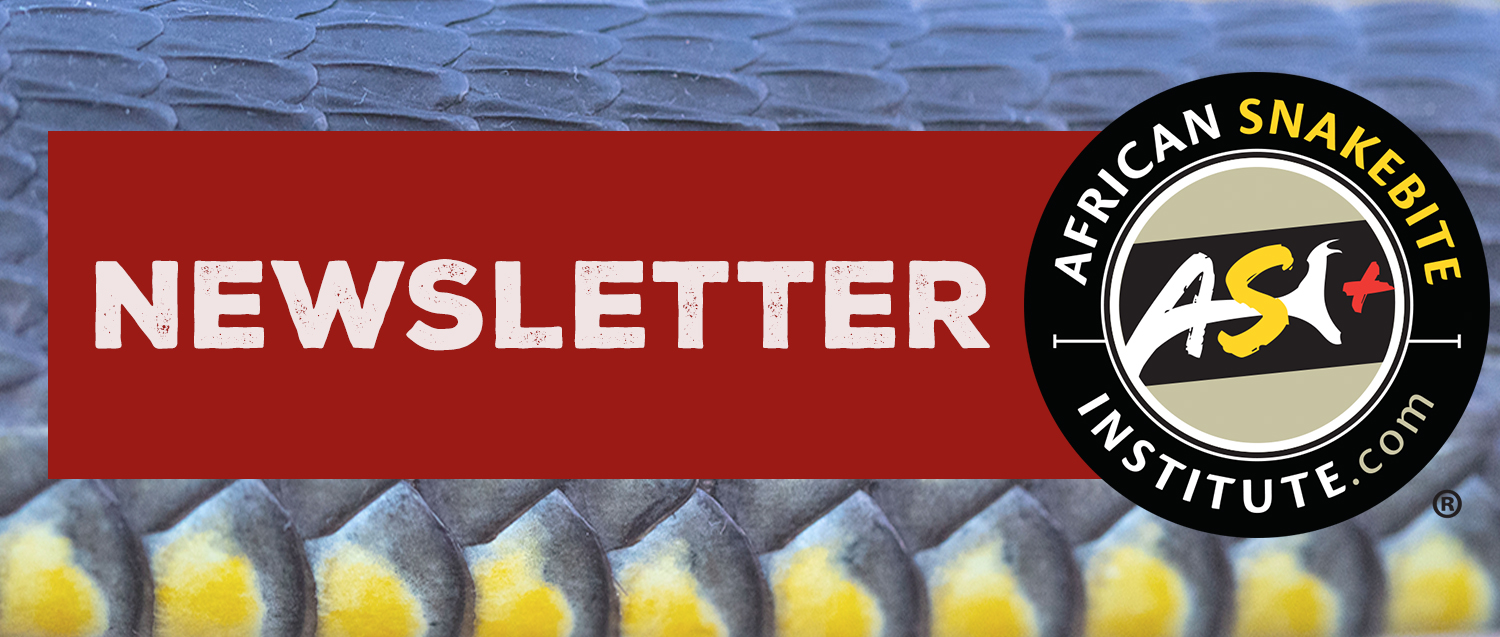 |
|
April 2025 - Snake Distribution
|
|
|
|
My late Oom Willie of the farm Blinkklip in North West Province of South Africa was quite sure that he had Green Mambas on his farm, but what he was seeing were actually green Boomslang. Generally, male Boomslang are green in colour, whereas females are mostly brown. Except for in the Western Cape, where males are very dark dorsally with orange, green or yellow sides and females are brown to grey. But not always. Around Durban we occasionally get a green Boomslang dropping eggs.
The Green Mamba is found in thick coastal bush from the extreme northern parts of the Eastern Cape (the old Transkei) northwards along the KwaZulu-Natal coast into Mozambique, eastern Zimbabwe and elsewhere further north into East Africa.
It is mostly found within a few kilometers of the sea in coastal bush with Strelitzias, but in northern KZN, around Hluhluwe and Ndumo, it can be found up to 45 km inland of the sea, provided that the habitat is suitable.
|
|
|
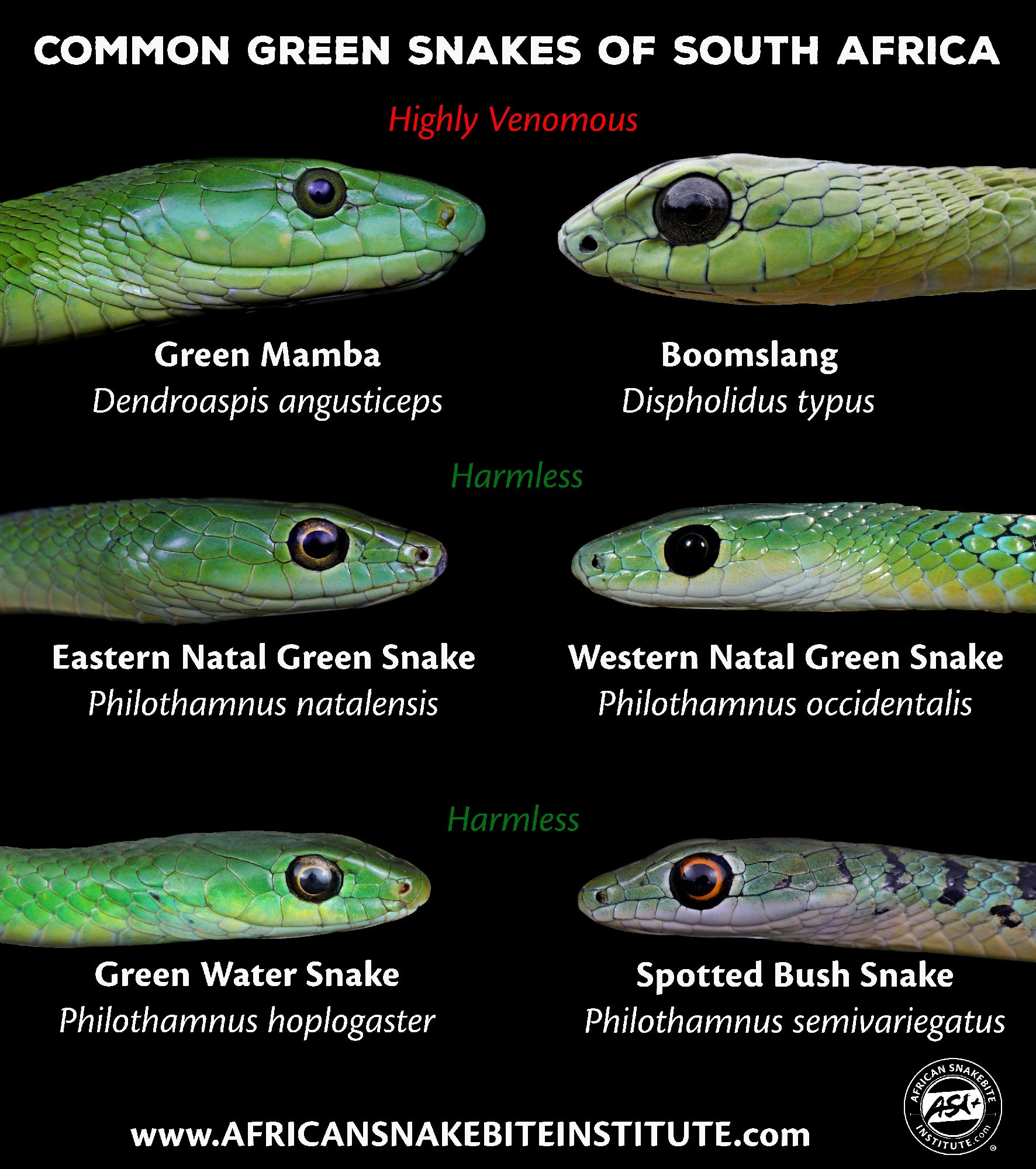 |
|
A selection of common green snakes in southern Africa showing how similar they can be.
|
|
|
|
Every snake species has a specific distribution, and we have been collecting data on their distributions for over 200 years. Historically, snakes were collected during reptile surveys and preserved in various museums, where reptile scientists could inspect and examine specimens preserved in alcohol. This eliminates (or limits) wrong identifications. This data is then used to form scientific papers and ultimately field guides. People will often say, “well snakes don’t read the field guides; they can occur where they want”. Although this is true, the field guide maps are based on an understanding of the species’ habitat preference, hundreds of years of data from surveys and observations as well as climatic models and geology. So, when you look at the distribution map of the Green Mamba in A Complete Guide to Snakes of Southern Africa, Snakes and Snakebite in Southern Africa or the ASI profiles, a great deal of work has gone into compiling accurate maps.
We are often told of Green Mabas living in the Kruger National Park or in parts of Mpumalanga or Limpopo. Except for the odd hitchhiker, they are not found there, and should a Green Mamba end up in an area well out of its natural range, it will in all likelihood not survive for very long. In central Zimbabwe, any large green snake is referred to as a Green Mamba but it is actually Boomslang that people are encountering. Green Mambas only just enter Zimbabwe around the warm and tropical lowland forests of Honda and Pungwe Valleys.
|
|
|
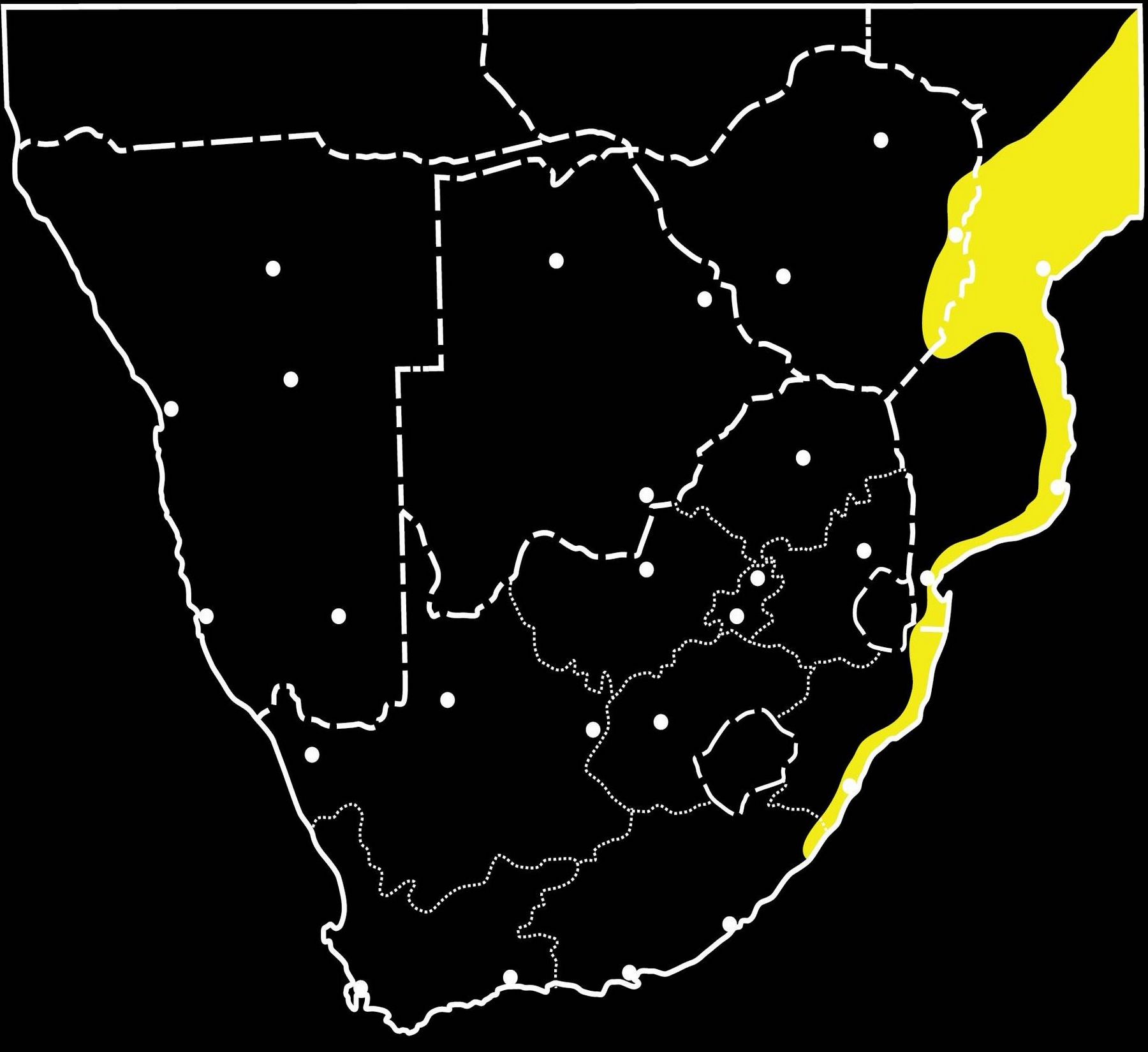 |
|
A map showing the known distribution of Green Mambas in southern Africa. Note that this species prefers warm, tropical coastal forest and moist savanna and is not found in bushveld regions.
|
|
|
|
|
Cute new Trinkets added to stock!
Check out our new range of eye-catching solid metal figurines.
Priced from R70.00 - R110.00 each.
|
|
|
| Order online here |
|
|
|
|
|
|
|
|
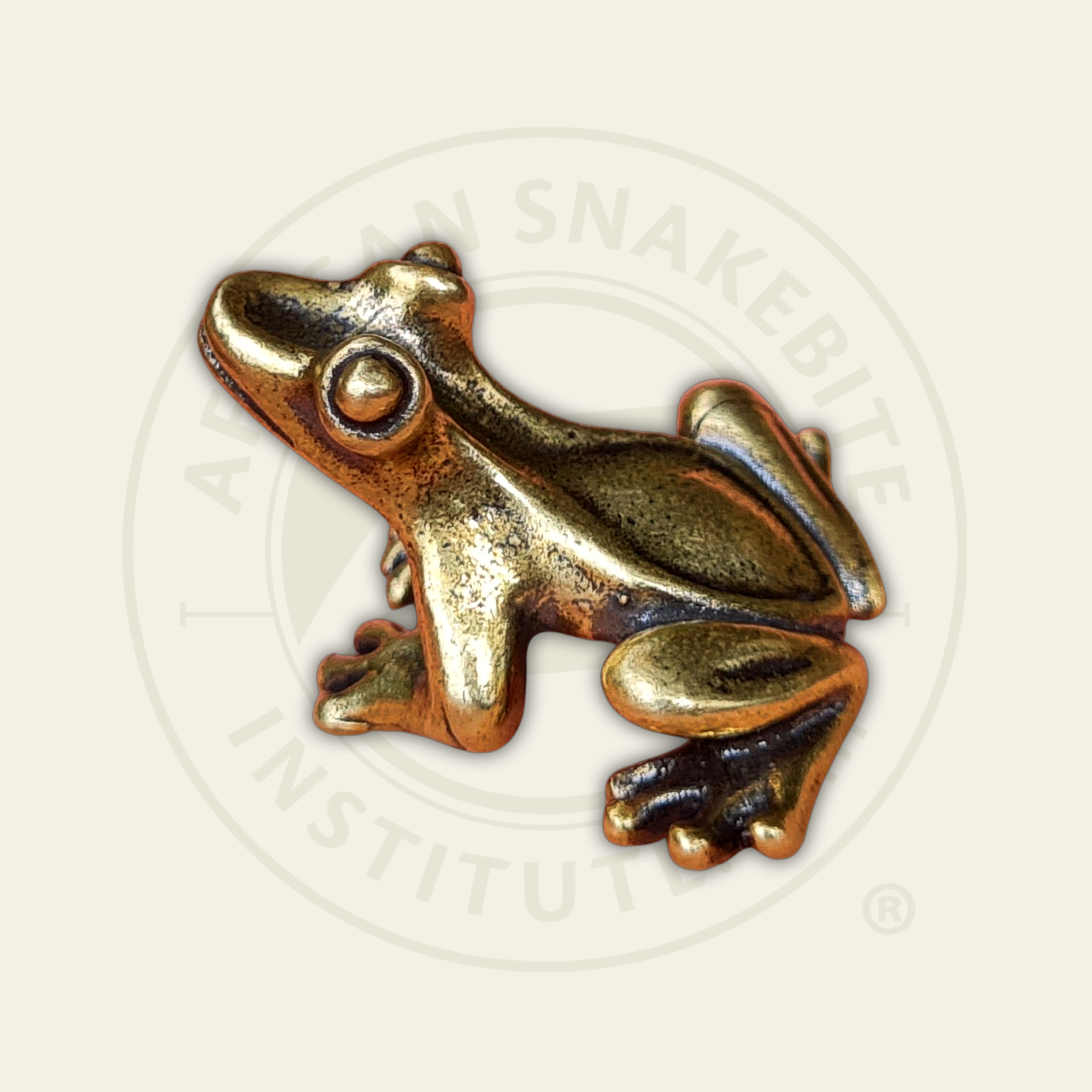 |
|
|
|
|
|
There are many factors that determine what areas are suitable for every snake species. Boomslang are largely tree-living and are absent from most of the Free State and Northern Cape. These are areas of grassland or karoo scrub and desert and are not suitable for Boomslang. The Black Mamba is a bushveld snake and is found in areas with trees, often with rocks and where the winters are not too cold. Snakes like the Spotted Rock Snake have an extended distribution, but within their range they live in narrow rock crevices where they feed largely on lizards, specifically geckos. Horned Adders prefer sandy areas or gravel plains but are also found on some mountain ranges such as the Brandberg in Namibia, the Waterberg in Limpopo and the Magaliesberg just north of Pretoria. They rely on camouflage to avoid detection and their colours match the environment – in Namibia, they are often very light in colour to match the local sand, in the Kalahari they are reddish and in Limpopo they are pastel dark and light brown.
The Rinkhals inhabits grasslands and fynbos (in the Western Cape) and where the habitat changes from grasslands to bushveld, they disappear and in many areas are replaced by the Mozambique Spitting Cobra. The latter is not found in grasslands. Farmers often speak of seeing Rinkhals in Limpopo Province, but they do not occur there and are probably being confused with the Mozambique Spitting Cobra – a common snake throughout the entire province. And don’t get confused with common names. Just because it is called a Mozambique Spitting Cobra does not mean it only occurs in Mozambique. The first specimen – when the snake was described in 1854 - was from Mozambique and its scientific name is Naja mossambica. However, it occurs as far west as northern Namibia.
|
|
|
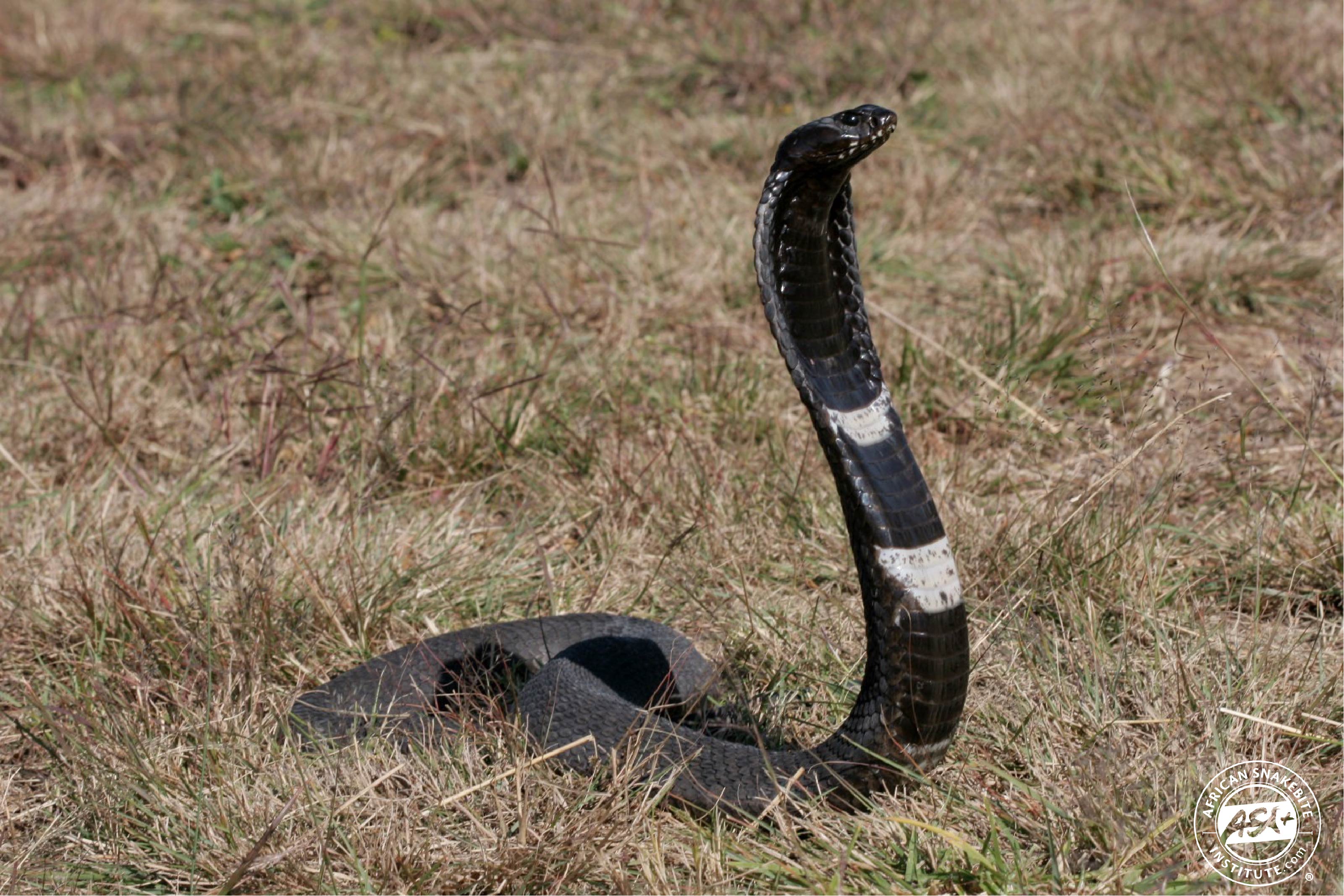 |
|
|
|
Rinkhals are a grassland and fynbos species. They are often misidentified or confused with other cobra species in bushveld areas.
|
|
|
|
Temperature and elevation also play a role in distribution, and Berg Adders are restricted to the Cape Fold mountains, the KwaZulu-Natal Drakensberg, the Mpumalanga Drakensberg and the eastern highlands in Zimbabwe. They favour high altitudes but are found at sea level at Betties Bay and in parts of the Garden Route.
Some snakes, like the Spotted Skaapsteker, can handle extreme cold temperatures in the Free State and Lesotho, while others like the Eastern Natal Green Snake, prefer areas where the winter temperatures do not drop below zero.
Diet also plays an important role and snakes like the Herald Snake feed largely on toads and favour the wetter eastern half of the country. Green Water Snakes prey on small frogs (not toads) and fish, and frequent wet areas, whereas the Namaqua Dwarf Adder lives in coastal dunes on the west coast, where it feeds largely on lizards, especially sand lizards and geckos.
Occasionally, we will find new range extensions, usually in areas that are poorly sampled or for rarely seen species. The discovery of Speckled Shield-nose Snakes (Aspidelaps scutatus scutatus) outside of Kimberley in the Northern Cape in 2016 resulted in a 250km southward range extension. This area is poorly sampled, and these snakes live underground and are easily missed in surveys.
|
|
|
 |
|
|
|
Speckled Shield-nose Snakes (Aspidelaps scutatus scutatus) are not commonly seen and have a larger distribution than was previously plotted.
|
|
Then we have generalists like the Puff Adder and Brown House Snake that are widely distributed throughout most of the country. They also vary regionally and Puff Adders from northern Gauteng look quite different from West Coast and Eastern Cape Puff Adders. They may also have different feeding habits and reproduce at different times of the year.
Brown House Snakes are highly adaptable and often frequent suburban gardens in search of rodents, hence their common name. The coastal varieties in KZN grow up to 1,5 m in length, whereas those from Gauteng rarely exceed 75 cm in length.
Urban development, farming practices and other developments like open cast mining that impact on habitat have a massive influence on snake distribution and for some species, large tracts of suitable habitat have been destroyed over the past hundred years.
|
|
|
Snake scale tongs!
The JM100 Snake Tongs are now available in a limited edition snake scale pattern, offering a bold and unique look!
This tong is ideal for removing problem snakes, especially on mines, game farms and game lodges.
Premium Build – Crafted from high-quality aluminum for strength and lightweight handling.Exclusive Design – A unique pattern makes these tongs stand out—available for a limited time only! Ergonomic Comfort – Easy-to-use handle ensures a comfortable and controlled grip.Whether you’re working in the field or managing reptiles at home, these limited-edition tongs combine style and functionality like never before. Get yours before they slither away! All JM Snake tongs come with a guarantee.
Price R1495.00
|
|
|
| Order online here |
|
|
|
|
|
It’s finally here! Introducing our new online Kids’ Snake Awareness course!
We’ve been inundated with requests for kids’ courses from all parts of Southern Africa, and so we have developed a fun and in-depth online course!
The course covers topics like how snakes work, snake senses, behaviour, defences, venom and a whole lot more! It also includes downloadable activities for the kids.
There’s no doubt that by educating the next generation, we will take great steps in snake awareness and conservation.
The course price is R250.00 and kids have lifetime access to the content and can work through it at their own pace. You can sign up online here: https://bit.ly/3DzSjxk
|
|
|
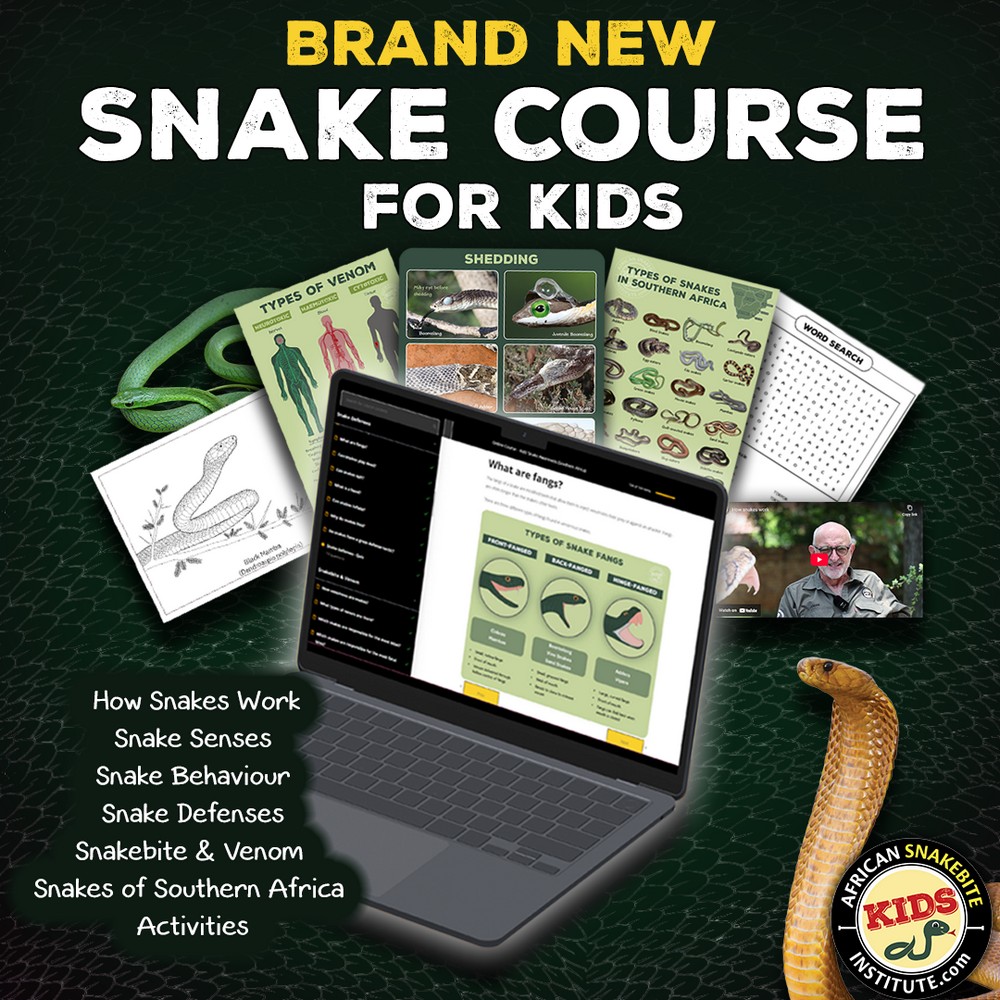 |
|
|
|
|
|
EASTERN CAPE
PORT ELIZABETH
Snake Awareness, First Aid for Snakebite and Venomous Snake Handling Course
Date: Saturday 05 April 2025
Venue: Walmer Scout Hall, Port Elizabeth
|
|
|
| Book here |
|
|
|
EASTERN CAPE
PORT ELIZABETH
Venomous Snake Handling Bootcamp
Date: Saturday 05 April 2025
Venue: Walmer Scout Hall, Port Elizabeth
|
|
|
| Book here |
|
|
|
EASTERN CAPE
EAST LONDON
Snake Awareness, First Aid for Snakebite and Venomous Snake Handling Course
Date: Sunday 06 April 2025
Venue: Thistlewoods, Gonubie, East London
|
|
|
| Book here |
|
|
|
EASTERN CAPE
EAST LONDON
Venomous Snake Handling Bootcamp
Date: Sunday 06 April 2025
Venue: Thistlewoods, Gonubie, East London
|
|
|
| Book here |
|
|
|
GAUTENG
PRETORIA
Snake Awareness, First Aid for Snakebite and Venomous Snake Handling Course
Date: Saturday 12 April 2025
Venue: Inyathi Park, Pretoria
|
|
|
| Book here |
|
|
|
GAUTENG
PRETORIA
FREE Kids Snake Awareness Session
Date: Saturday 12 April 2025
Venue: Inyathi Park, Pretoria
|
|
|
| Book here |
|
|
|
GAUTENG
PRETORIA
Venomous Snake Handling Bootcamp
Date: Sunday 13 April 2025
Venue: Inyathi Park, Pretoria
|
|
|
| Book here |
|
|
|
NORTH WEST
MAFIKENG
Snake Awareness, First Aid for Snakebite and Venomous Snake Handling Course
Date: Saturday 10 May 2025
Venue:Laerskool Buhrmansdrif, Mafikeng
|
|
|
| Book here |
|
|
|
NORTH WEST
MAFIKENG
FREE Kids Snake Awareness Session
Date: Saturday 10 May 2025
Venue: Laerskool Buhrmansdrif, Mafikeng
|
|
|
| Book here |
|
|
|
NORTH WEST
MAFIKENG
Venomous Snake Handling Bootcamp
Date: Sunday 11 May 2025
Venue: Laerskool Buhrmansdrif, Mafikeng
|
|
|
| Book here |
|
|
|
|
|
|
|
Johan Marais is the author of various books on reptiles including the best-seller - A Complete Guide to Snakes of Southern Africa. He is a popular public speaker and CEO of the African Snakebite Institute. The African Snakebite Institute (ASI) offers a variety of courses including Snake Awareness, Scorpion Awareness and Venomous Snake Handling. ASI is accredited by the International Society of Zoological Sciences (ISZS) and is a Travel Doctor-approved service provider. The courses are also accredited by the Health Professions Council of South Africa (HPCSA). ASI is the largest provider of quality snake handling and safety equipment in Africa!
|
 |
|
Copyright © 2025 African Snakebite Institute, All rights reserved.
Our mailing address is:
admin@asiorg.co.za
Unsubscribe from this list
|
|
|
|
|